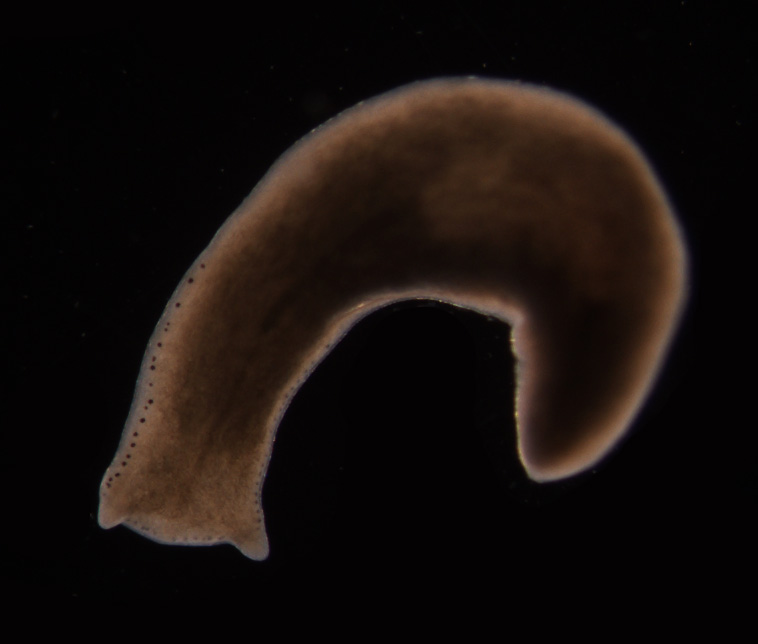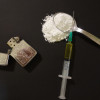How flatworms regenerate tissue
Interview with
When a part of the body of some organisms is lost, they can grow a replacement, but what controls this and how does it differ from when individual cells wear out in a tissue and needs replacing? Worms - it turns out - might be able to help us. Peter Reddien spoke to Chris Smith... 
Peter - My name is Peter Reddien. I'm an Associate Professor of Biology at MIT and a member of the Whitehead Institute. The problem was how regeneration initiate it. In particular, we were looking at this process in an organism called planarians. Planarians are flatworms. These are animals that are capable of regenerating anything. They can regrow new heads, new tails or entire organisms from tiny fragments of the body. One of the questions that's central to understanding regeneration in any organism is, how does it start? You wound an animal and then what happens to bring about all of the events of regeneration?
Chris - So, how did you attack that problem?
Peter - We attacked this problem by investigation of genes that are activated at wounds. We had found dozens of genes that are turned on by injury. Through investigation of a set of these genes, we found one required for regeneration. So, we did this with wound induced genes, inhibiting them one by one using RNA interference and found a particular gene called follistatin that when inhibited, cause a block in regeneration.
Chris - What was the nature of the injury that you were testing out on these worms?
Peter - Well, the nature of the injury initially was complete head removal and tail removal. This leaves a middle piece that's capable of regenerating a head on one end and a tail on the other. What happened was quite remarkably, these animals completely failed to regrow new tissues. What made this particular defect catch our eye was the fact that despite failing to regenerate, these animals in which we had inhibited the gene follistatin were capable of living and capable of replacing aged cells during natural tissue turnover. What I mean by that is that there's a population of cells that are involved in normal adult life in planarians and involved in regeneration. This population is called the neoblast population of cells. We know from prior work that within the neoblast are pluripotent adult stem cells. So, these pluripotent stem cells are dividing and producing new specialised or differentiated cells. For example, let's say an epidermal skin cell gets old then a neoblast will replace it with a new young one. A gut cell gets old, neoblast will replace it, and so on. That process of tissue turnover is happening constitutively and is essential for life. This process happens normally in the animals lacking normal follistatin function.
Chris - So, the fact that you could interrupt this follistatin signalling and stop the regeneration of the gross part of the body, indicates that that sort of regeneration is a different process from the tissue maintenance regeneration that's just repairing and replacing cut out cells at a tissue level.
Peter - That's exactly right. The difference in the defect between tissue turnover where everything was fine and regeneration really caught our eye, suggested that this gene may have a really unique and permanent role in regeneration specifically.
Chris - How does a tissue discriminate between the removal of a big chunk of the body, like the head, and the loss of a few cells just due to oxidative damage, you wet something that you didn't particularly agree with?
Peter - How they distinguish between the absence of a cell that's gotten old and the absence of a set of cells from injury is still a mystery that is unsolved. But what we know is that when there is an injury that has removed a substantial amount of tissues, injuries like that trigger a sequence of events that are specific to regeneration. There's particular events with the regenerative cells called neoblast, such as the migration of these cells to the wounds or do they continue division of these cells at wound sites that only happens when you actually remove something. We call the sequence of events that happen only in injuries where you've removed substantial tissue, the missing tissue response. And it is these events that follistatin is required for.
Chris - Looking downstream of follistatin, what does it actually appear to be doing to the target tissue once its produced under these traumatic injury situations?
Peter - So, follistatin is induced and what is required for are a series of events that are specific to regeneration. So, it's required for neoblasts - the regenerative cells - to specialise into replacement cells. We looked at this using eye regeneration and neoblast normally specialise into eye progenitors following head removal. This did not happen following inhibition of follistatin and amputation. In addition, neoblasts display sustained proliferation at wound sites and cases in which they need to regenerate substantial tissue. This was also defective in follistatin RNAi animals. Finally, there's increase in death of cells throughout the body that occurs when substantial tissue has been removed by injury. This process of death or apoptosis can be readily visualised with molecular assays and it failed to happen in the absence of follistatin.









Comments
Add a comment